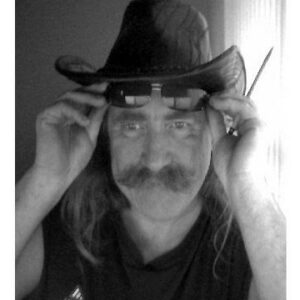Hungarian-born Csaba Markus is a painter and artist from the United States who specializes in serigraphy and etching, as well as a variety of other art techniques. As an artist, he has always sought to create work that not only pleases the viewer, but also touches his heart and soul. While etching and serigraphy were his signature techniques, he also experimented with a variety of other mediums, including sculpture, mono prints, ceramics, handmade papers, and animation. He is primarily interested in presenting the Renaissance, Neo-Classic, and Romantic periods in a modern era dubbed ‘Contemporary Classicism.’ By depicting his unusual creations on canvas, Csaba Markus hopes to raise awareness among the modern generation about the long-forgotten classical culture. He has frequently been praised for his paintings depicting the Eternal Feminine in contrasting forms—as a mortal woman and as a mythological goddess. His distinctive styles, unconventional art forms, and innovative ideas continue to astound his admirers worldwide; interestingly, his ideas consistently exceed his own expectations with each new masterpiece. He is regarded as one of the most eminent contemporary artists worldwide, with collectors eagerly awaiting the release of his new works.
Childhood & Adolescence
Csaba Markus was born in Budapest, Hungary, on January 26, 1953, to Karoly Markus and Szollos Erzsebet. From an early age, he was drawn to art and drew inspiration from baroque architecture, as well as castles and palaces from the Renaissance era.
Career of Csaba
Csaba Markus began his training as a sculptor under the tutelage of Ferenc Mohacsi Regos, a renowned Hungarian academic.
He continued to excel in his chosen artistic field, earning the respect and support of his teachers. He was only 14 years old when his work was broadcast on international public television.
The majority of his works are influenced by the Renaissance, Neo-Classic, and Romantic periods, with avant-garde and abstraction as his preferred styles.
It was becoming increasingly difficult for him to work within the confines of Hungary’s communist beliefs. He was looking for an environment that would foster his development and provide him with artistic freedom. He immigrated to America in 1978 to escape the oppressive communist regime in Hungary.
He established a fine art studio in Mission Viejo, California, where he continued to incorporate Old World and Renaissance philosophies into his work.
He was successful in creating an environment that was receptive to new ideas and innovations, as well as challenging himself each day to create a new piece of artwork, through his studio.
While establishing himself as a self-sufficient artist, he experimented with a variety of mediums and techniques, including metal sculpture, silk screen printing, stone lithographs, handmade papers, animation, serigraphs, etchings, and ceramics.
Among all the art prints, he considered serigraphy to be the most difficult, yet beautiful, struggle because it allowed him to experiment with a variety of colors, textures, and intricate details to create a unique masterpiece.
He used to personally handcraft each limited edition serigraph using a variety of materials such as platinum, ground glass, dried pigments, and 24-carat gold, evoking the craftsmanship of Europe.
Among his more well-known serigraphs are ‘Harmonia on Canvas’, ‘Emerald Rhapsody’, ‘Constantina’, ‘Diamond Muse’, ‘Medolia Serigraph’, ‘La Bella Serigraph’, ‘Florenza’, and ‘Lafeminine Serigraph on paper’.
His etchings combined elements of Leonardo da Vinci, Titian, and Botticelli’s early Renaissance artworks with the rich and vibrant innovations of Michelangelo and Giotto, all presented through stylized, beautiful, and sensual female figures.
‘Adoration of Thalia’, ‘Muse of Fortune’, ‘Athene’, ‘Bold Spirit’, ‘Allegaria’, ‘Tascana Nude’, ‘Lady of Spring’, ‘Lyra’, and ‘Unicorn Dance’ are just a few of his dry-point etching creations.
In 2004, he founded his own publishing company, Dreaming Muse, through which he published a number of fine art books, including ‘Gems and Rhapsodies’ (2004), ‘Artist and Muses: The Life and Art of Csaba Markus’ (2007), and ‘Artist and Muses’ (2008). (Silk Edition, 2008).
Recently, he has attempted to modify the technique of the Old Masters’ ‘Contemporary Classicism’ in order to create his own distinct style, similar to the artists who fused Classicism and Renaissance in the 14th and 15th centuries.
‘Giorgianna’, ‘Triumph of Venus’, ‘Tianna’, ‘Aqua Smphonia’, ‘Muses of Tray’, ‘Honoria’, ‘Irisiana’, ‘Angelicas’, ‘Women of the Palace’, ‘Enchantment’, and ‘La danseuse en jouir’ are just a few of his well-known works.
Awards and Accomplishments
The Toronto Sun newspaper named his oil painting ‘Pure Love’ one of the world’s ten most sensual paintings. He is honored to have his works exhibited in some of the world’s most prestigious art galleries in France, Japan, the United Kingdom, the United States, and Russia.
Estimated Net Worth
Csaba Markus is one of the wealthiest sculptors and is included in the list of the most popular sculptors. Csaba Markus net worth is approximately $48 million, according to our analysis, Wikipedia, Forbes, and Business Insider.
Trivia
This contemporary artist employs a novel technique for creating oil paintings, which involves layering thin, transparent paint before adding a final hue. As such, up to 30 layers are used, with a particular emphasis on the eyes and mouth.
His etchings are created using two to three copper plates, whereas his serigraphs are printed in over a hundred different colors.


